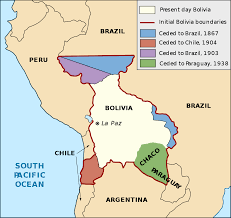
After more than a century, the body of an ancient mummified Incan girl has been returned to her native land of modern-day Bolivia. It is estimated through carbon dating of maize located with her that she died roughly around the year 1470 at the age of eight.
She was discovered in 1890 in a stone tomb in the Andean highlands, along with various beads, sandals, and feathers, and immediately after was donated to the Michigan State University Museum by the US consul to Chile. She has since been known as Ñusta, or ‘princess’ in Quechua. After much deliberation on the part of the university, Dr. William A. Lovis, curator of anthropology for the museum, spearheaded and accomplished an effort to repatriate the girl to the government of Bolivia, the first of its kind in the anthropological field according to the article.
I felt the Latin America in this short article was portrayed as an object being affected by the actions of outside influences (i.e., the USA) as opposed to an actor with agency. It gives the impression that the mummy was taken from a hapless/disinterested government in 1890 that now, thanks to the altruism of these American museum curators, is content to have her back.
In regards to its relevance to the themes of our class, I felt that it rejects a lot of opportunity to speak on a few very questionable actions mentioned throughout, namely the inciting incident of the entire article. The language used lacks the kind of nuance and critique that I would expect when speaking on the removal of an indigenous mummified body from Latin America in the 19th century by American anthropologists with the goal to donate it to an American university; instead, this is done away with in one sentence at the beginning of the piece. Another example is the fact that in that sentence, it’s said it was the US consul to Chile that donated the body to the MSU Museum, but it was the country of Bolivia that it was returned to in the past months. Researching maps of the late 1800’s of both Chile and Bolivia only increased my confusion. I felt this was carelessly glossed over as if the audience would not notice the discrepancy in countries, and while I acknowledge it’s a stretch, I can’t help but think that it’s an extension of the perception that all of Latin America might as well be under the same name to many of the potential audience members of this article.
Lastly were the comments quoted from Lovis on the efforts for repatriation of the eight-year-old girl. He made a blog post explaining that Ñusta was removed from public display in the 1970’s once curators recognized the “changing societal sentiments toward the display of human remains” (Lovis 2019). It is then that the article says that Lovis tried in vain to garner interest in further research and testing on the body and its artifacts, and after failing he “came to the conclusion that, if nobody was going to be doing any work with either the artifacts or the humans remains and if we were not going to display the human remains, it would be better served to return them to Bolivia” (Solly 2019). Although reading through the entire blog post from Lovis, I gathered a sense that he understood the ethical implications of this entire ordeal, the article quotes him in such a way that gave me the impression of a cold and self-interested curator who has only changed his actions regarding the girl according to societal influences and disinterest from him peers in pursuing further investigation into the mummy’s background. In casual terms, that he thought “Well, if I can’t get any more out of the indigenous body I have, it might as well go back to where it came from, I guess.” Again, the entirety of the blog post gives a different impression from the article written about it.
Overall, the article treats the possession of (indigenous peoples’) human remains by non-indigenous people and the structures that have allowed that to happen with far less nuance and care that I would hope for and expect.
Here are links to the article and Lovis’ blog post.
References
Lovis, William A. “William Lovis: A Mummy Returns Home.” 360 Perspective, February 13, 2019. https://msutoday.msu.edu/360/2019/william-lovis-a-mummy-returns-home/.
Solly, Meilan. “500-Year-Old Inca Mummy Repatriated to Bolivia.” Smithsonian SmartNews, August 22, 2019. https://www.smithsonianmag.com/smart-news/500-year-old-inca-mummy-repatriated-bolivia-180972966/
